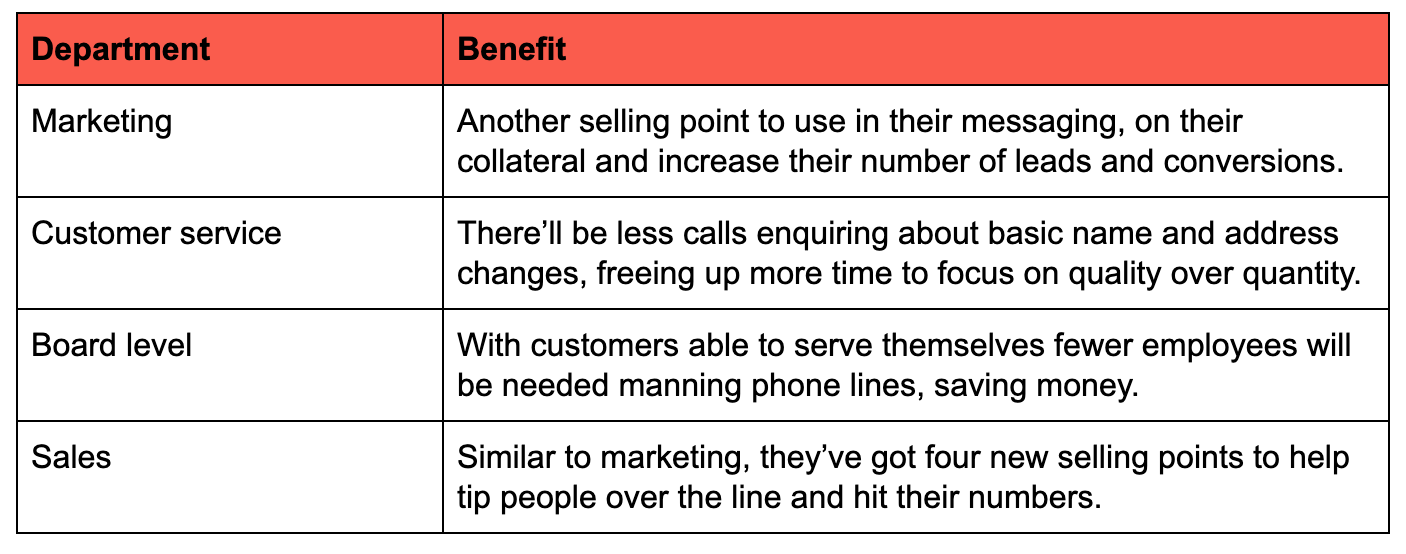Internal communication plans are integral to the success of any new product or feature. But, with so much going on getting external launches prepared, making final tweaks and chasing looming deadlines, they don’t always get the TLC they need.
So, whether you’re looking for ways to communicate your message better, increase adoption, improve your support set-up or get everyone bought-in, here are nine tips to help with all four.
1. Knowledge is power
Make sure you’re feeding the right people with the right information. It might sound obvious but it still gets missed - sometimes.
Not enough information will leave people unprepared but overloading them can get them flustered. For example, does everyone need an in-depth understanding of your ongoing lead generation and marketing campaigns? Sales, marketing and product, yes, but IT? Probably not.
That’s not to say you have to keep that kind of detail from them completely, but strengthen the uptake of the information you do give them by not sandwiching it in between all the irrelevant bits.
Tip: if you’re not totally confident you’re providing people with everything they need, ask them...which ties nicely to our next point.
2. Ask people what they want
Some product marketers have a really nice internal set-up where they, product and sales get on like a house on fire...others don’t. It still applies to both scenarios, but if you’ve got friction with other departments letting them take a bit of the lead might help.
That doesn’t mean it’s a case of they say “jump” and you say “how high?”, but instead of just telling them ‘you’ll get this type of training on this day’, ask them what works best for them.
- Do morning or afternoon slots suit better?
- Would they prefer in-person training or offline documents?
- Does anyone need a bit of 1-2-1 support?
- Is there anything they think could be improved from the last internal product launch?
It’ll shift the dynamic and really show them you’re working together.
3. Timing is of the essence
People don’t like things being sprung on them last minute - especially stuff that directly impacts them. We’re not saying you have to involve every department in every stage, but if you’re discussing something today that’ll impact your customer support team in 10 weeks’ time, let them know about it sooner rather than later.
It’ll give them time to prepare, you the opportunity to iron out any concerns that might arise and make for a smoother journey all-round.
Tip: if you’re not already, remember to bring key heads in from these departments when ideas are in the concept stage. Not only will it enrich their buy-in, but it’ll likely result in a stronger, more well-thought-out product full stop.
4. Tell them how it benefits them
Be specific with your benefits, because every new product or feature will mean something different to each department.
Example:
Let’s say you’re a financial services company and you’re launching a new app that enables customers to apply for credit, update their personal details, check their credit score and speak to an advisor via live chat.

As much as we wish they were, your goals aren’t always aligned to other teams’, so, by showing how yours helps theirs, you’ll increase business-wide engagement and the overall success of the launch.
5. Variety is key
Everyone digests information differently so prepare a few types of collateral, like:
- One-page flyers
- Product brochures
- Videos
- Presentations
- Emails
- Posters
- Meetings.
All seven might be a bit much so if you’re not sure which would work best, going back to point two, just ask. Different departments might be more receptive to different styles too, so remember to factor that into your plans.
Make it all accessible
Whether you’ve got one or six products in your portfolio, it’s a good idea to store all your collateral in a single place for everyone to access when they want - like a folder in your drive or an internal intranet system, for example.
This will:
- Give everyone autonomy to refresh themselves as and when they want;
- Enable teams to train new recruits themselves; and
- Reduce the number of people coming to you asking for X, Y or Z.
It doesn’t need to be anything complicated, a simple file structure like this would do:
- New products
- Personal banking app
- Internal collateral
- One-page flyer
- Presentation recording
- Brochure
- Videos
6. Look at your language
Just because you know what something means it doesn’t mean your sales, customer service or IT teams do, and if they struggle your customers have got no chance.
So, before you send any emails or hand out any collateral go through it all and check:
- It’s not got any jargon only you and your team use, and
- It’s not full of marketing lingo. Keep it simple and focus on the key messages and information its recipients need to take away.
Tip: to make sure nothing’s gone unnoticed pass your collateral onto someone in the business (outside of your department) with a fresh pair of eyes and ask them to flag anything that trips them up.

7. Empower people
One surefire way to get people bought in is to empower them and there are a couple of ways you can go about this.
Idea #1
If you’re planning on running a training session with your sales team, instead of someone from the product marketing team hosting it, get someone from the sales department to. Rightly or wrongly, having ‘one of their own’ presenting it can make some people more receptive.
To maintain some control and ensure accuracy, just be sure to send someone from your team to oversee the session and answer any questions.
Idea #2
Okay, so this one might need buy-in from someone more senior first, but, if you can, put some of the KPIs onto other teams. If nothing before this has worked (which it should have!) we’re confident this one will because it directly impacts their numbers and departmental success.
Sticking with the personal banking example, although you might have an overarching adoption goal for existing customers, you could divide that goal up and put X amount on the customer service team, Y amount on your customer comms team, Z amount on the marketing team and some on yourself, of course.
But remember, it’s not a case of dumping a target on their desk and scarpering. You still play a pivotal role in helping them hit those KPIs.
8. Don’t launch and run
Keep you and your team visible and make sure everyone who could need help knows you’re on-hand to support them by:
- Reminding them you’re around for questions or extra guidance - a simple email would do.
- Running an internal incentive campaign - this could be a bit of fun, like a quiz or game, or a prize for the first person to achieve X conversions.
- Asking sales and customer service teams how they’re getting on, what kind of feedback they’re hearing and whether or not they think improvements could be made.
9. Do a practice run
In the words of Neil Patel, “When you rehearse the launch process, you ameliorate a significant risk. If you expect your launch to be successful, you must control the features of the launch that are within your control.”
His sentiment’s shared by James Hacket, former CEO of Steelchase:
“By building practice into our formal process, we make sure everyone is given the time and resources they need to do it and do it thoroughly ...If the effort is worth our collective time and we are playing to win, then we need to practice to perform.
“Practice, in this case, meant training everyone from the line workers who had to adapt their production protocols to the sales force and order management people to the board members who would be asked about the product line once it went public.”
What are your go-to tactics for internal product or feature launches? Let us know below!


